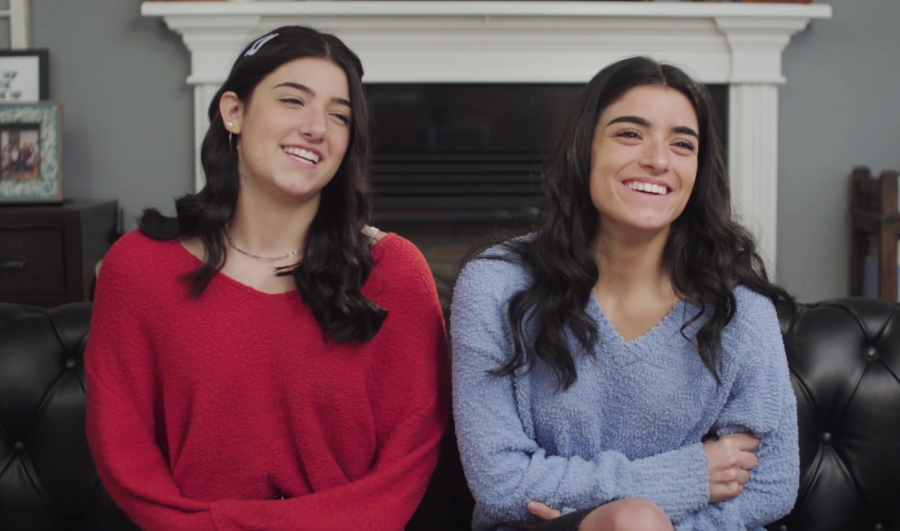Why the D’Amelio Dynasty and Diversity Don’t Work Together
Oct 15, 2020
It is a household name among preteens across the country: Charli D’Amelio. This 16-year-old dancer from Connecticut appeared on my for you page around October 2019, someone who I never suspected would have dance skills that could propel her to become the most followed person on the app. Of the 800 million people worldwide using the app Tiktok, about 92 million follow D’Amelio. The comments on her videos were anywhere in between “She is so good!” to “I don’t understand why she gets all the hype.” D’Amelio’s older sister, Dixie D’Amelio, soon had an increase in her view count as well. When I saw this sudden raise in views on their videos, I never thought much of it. After all, the dance and comedy videos they were making garnered them millions of views, and they weren’t hurting anybody so why bother caring?
I took a small break from Tiktok during the school year because I knew its addictive nature could get the best of me. When I started using the app during quarantine, it was a shock to see not only Charli and Dixie become so popular, but their friends and those who looked like them create similar content and also gain so much attention. The entire app was filled with dancing videos, not just the Renegade. A lot of creators started living in mansions together and created a brand for themselves, such as the Hype House and Sway House. It dawned on me that these teens were making millions of dollars just from dancing in front of a camera.
Once again, I didn’t really have too much of an issue with it. A lot of these teens were choosing to drop out of school in order to pursue their careers through Tiktok, something my friends and I joked about being, in all honesty, very odd. The pattern that I soon realized, with these popular creators, was that they all fell into pretty much the same category: they were white.
It is no secret that there has been an incredibly large push throughout history to perpetuate the notion of fairness being a defining characteristic of what makes one seem “attractive.” Skin lightening creams have taken over the large beauty companies, from major brands such as L’Oreal and Johnson & Johnson in the US, all the way to countries like India. The skincare company Glow and Lovely (renamed from Fair and Lovely as of 2020) has dominated the skincare lightening industry in India, having endorsements from popular Bollywood celebrities to encourage the whitening of their skin. These products have been popular and will likely remain so. It has always seemed like there has been a larger push to emphasize beauty products that help you fit more eurocentric beauty standards, and with the rise of the D’Amelio’s fame, it can be understood how powerful having a certain look can be.
Charli and Dixie’s popularity have been the catalyst into the same sort of content that was featured on Tiktok’s original service, Musical.ly. The app that was intended to capture videos of sunsets turned into a spread of primarily young white teenagers gaining momentum by making lip-sync videos to trending songs, earning money off of them in the same manner creators are doing with Tiktok today.
The problem with the app is not that there are white creators, but more about why Tiktok is permitting a lack of central diversity on the For You Page of millions when there are creators coming from multiple backgrounds. A Tiktok spokesperson shared with Buzzfeed news that the app had a system called collaborative filtering, which means that for example, if a majority of creators on the app are white, it can prevent creators of color with a smaller following to reach larger audiences. This can lead to a decrease in opportunities for creators of color to receive, and it is most apparent with the popular Renegade dance itself. Contrary to what many believe, Charli was not the creator of the dance, but 14-year-old Jalaiah Harmon. Her version of the dance was more complex than Charli’s version, yet Harmon was not able to capitalize on it in the same way D’Amelio did.
Not only has Tiktok permitted a lack of representation on the For You Page, but certain creators have been able to get away with actions as their rise to fame increased. Olivia Ponton, a model and popular creator on the app, made a dancing video with rapper and convicted felon Daniel Hernandez, or Tekashi69. This kind of content is open to not only teens but children on the app to view, and without any proper context these kids may not be able to recognize a problem when blindly following their favorite creator like Ponton. Charli D’Amelio herself recently received backlash over the popular drink she created in partnership with Dunkin Donuts, known as The Charli. On my For You Page a few weeks after the drink was released, I saw baristas at Dunkin Donuts begin to criticize the large amounts of sugar the drink held and how it was not suitable for the young kids coming in eager to drink it. Neither Tiktokers addressed the issue.
While the D’Amelio’s and content made by creators similar to them can be entertaining to watch, we need to be more careful of the messages young viewers can receive through them. The lack of diversity among current popular creators is still prevalent, and Tiktok should carefully be looking into better solutions instead of systems like collaborative filtering. In a time when our youth are more impressionable than ever, it is all the more important to hold the popular social media services we use accountable.




